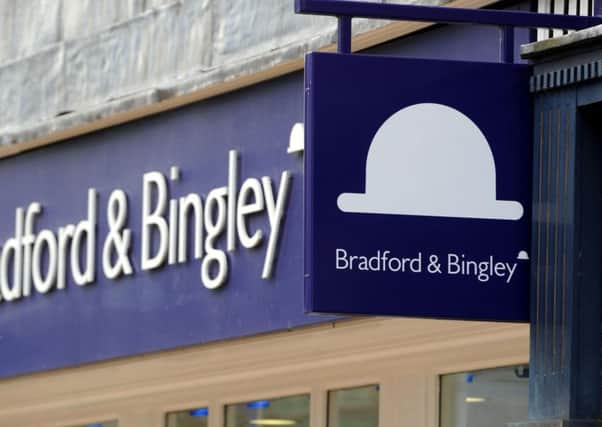YP Comment: Deal represents value for money - Bradford & Bingley's asset sale


With its proud Yorkshire roots Bradford & Bingley had established itself as a sensible, conservatively-run building society, but in 2000 it became a bank, abandoned its mutual status and over the years moved into riskier areas of lending.
This strategy backfired spectacularly in 2008 when the UK housing market slumped as the global financial crisis started to bite, with the bank needing to be rescued by a Government bail-out, much to its ignominy.
Advertisement
Hide AdAdvertisement
Hide AdNearly a decade on and the Government has triggered the sale of £11.8bn worth of Bradford & Bingley loans acquired during the crisis.
Chancellor Philip Hammond described it as another “major milestone” on the road to getting taxpayers’ money back following the crash. That might be over-egging the pudding, but the claim that it represents “value for money” does at least hold water.
Not that British taxpayers will be dancing in the streets. Of all the bailed out banks Lloyds is one of the few winners, having recently seen its annual profits more than double to £4.2bn.
Contrast this with the struggling fortunes of Royal Bank of Scotland (RBS), in which the taxpayer still has a 73 per cent stake, and the picture begins to look less rosy.
Advertisement
Hide AdAdvertisement
Hide AdThe Bradford & Bingley deal is at least another closed chapter on the ruinous financial crisis, and amid growing uncertainty as Brexit negotiations get underway it is probably as good a deal as could have been expected in the circumstances.
Perhaps above all, though, it is a salutary lesson not to bite off more than you can chew.
Battle lines drawn - EU sets out its Brexit strategy
At the end of a historic week in which Brexit Secretary David Davis presented the Government’s Great Repeal Bill to Parliament and the Prime Minister triggered Article 50, it was the EU’s turn to outline its negotiating strategy.
And if European Council president Donald Tusk appeared downcast when he was handed Theresa May’s six-page letter on Wednesday, he struck a more confident figure as he unveiled his guidelines for the forthcoming Brexit talks.
Advertisement
Hide AdAdvertisement
Hide AdNegotiations on future trade deals between the UK and EU could begin as early as this autumn, he said, but stressed these could only take place once “sufficient progress” has been reached over arrangements for Britain’s withdrawal – a veiled reference to agreement on a “divorce bill”. If that was a shot across the bow it was offset by his insistence that Brussels would adopt a “constructive” approach and the importance of keeping the UK as a “close partner” on trade and security in the future. However, Mr Tusk also expects withdrawal negotiations to be “difficult, complex and sometimes even confrontational”.
It was a reminder of the sheer scale of the legislative and logistical exercise that both Westminster and Brussels are entering into. There are big issues that need to be addressed including the nature of any transitional arrangements and the status of British nationals living in the EU and their counterparts in the UK, amid concern about the future of Gibraltar.
As such both sides must remember exactly what is at stake and do their utmost to ensure that our exit from the EU is as smooth and orderly as possible.
County’s high life - North Yorkshire celebrated
on the day after Flying Scotsman steamed across the beautiful Yorkshire countryside, it is highly appropriate the county has been recognised as containing some of the most desirable places to live in Britain.
Advertisement
Hide AdAdvertisement
Hide AdA new survey by Halifax has named the district of Hambleton in North Yorkshire among the top five locations in the UK for enjoying the best quality of life of any rural area.
Four other parts of Yorkshire – Ryedale, Richmond, Craven and Selby – also made the top 50 in an impressive vote of confidence in the county.
With its picture-perfect countryside market towns like Northallerton, Bedale, Thirsk and Stokesley surrounded by villages such as Newby Wiske, Felixkirk and Kirkby Fleetham, those lucky enough to live in Hambleton know there is much to love about the region.
Little wonder, then, that it is steaming ahead of the competition when it comes to providing a true rural idyll.